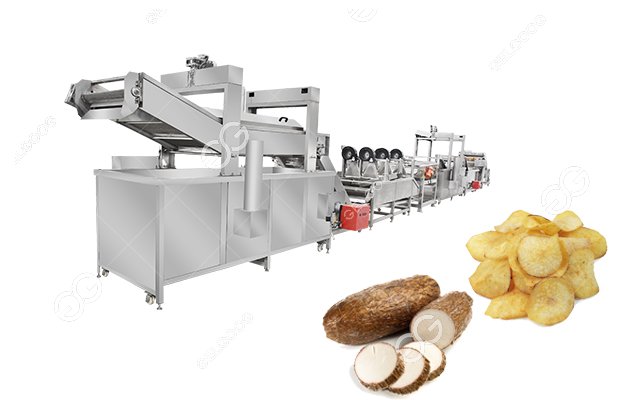What Is The Process of Cassava Chips?
In the bustling world of snack production, one humble root vegetable has carved out its own crunchy niche – cassava. Cassava chips, with their satisfying crunch and versatile flavor, have gained popularity worldwide as a tasty and nutritious snack option. But have you ever wondered about the journey these chips take from farm to packet? Let's delve into the fascinating process that transforms cassava roots into crispy delights within the confines of a factory.

1. Harvesting and washing
The journey begins at the cassava farms, where workers carefully harvest the mature roots. Once harvested, the cassava roots are transported to the processing facility. The first step in the factory is washing, where the roots are thoroughly cleaned to remove dirt and debris. Cleanliness at this stage is crucial to ensure the quality and safety of the final product.
2. Peeling and inspection
After washing, the cassava roots undergo peeling. Peeling can be done manually or using mechanical peelers, depending on the scale of the operation. The peeled roots are then inspected for any remaining blemishes or defects, ensuring only the highest quality cassava makes its way to the next stage of processing.
3. Slicing
Once peeled and inspected, the cassava roots are sliced into thin, uniform chips. Precision is key during this step to ensure consistency in size and shape, which ultimately affects the texture of the final product. Advanced slicing machinery is often employed to achieve the desired thickness.
4. Blanching
Blanching involves briefly immersing the cassava slices in boiling water or steam. This step serves multiple purposes: It helps to remove excess starch, partially cooks the cassava, and preserves the color and flavor. Blanching also prepares the slices for the subsequent dehydration process.
5. Dehydration
After blanching, the cassava slices are subjected to dehydration to remove moisture. Dehydration can be achieved through various methods such as hot air drying or vacuum drying. The goal is to reduce the moisture content to a level that ensures crispiness while also extending the shelf life of the chips.
6. Frying
Once dehydrated, the cassava slices are ready for frying – the step that gives cassava chips their signature crunch. The slices are immersed in hot oil until they reach the desired golden brown color and crispiness. Careful monitoring of temperature and frying time is essential to achieve uniformity across batches.
7. Deoiling
After frying, the cassava chips undergo deoiling to remove excess oil. This step not only improves the product's texture but also enhances its shelf stability. Deoiling can be accomplished through centrifugation or blotting with absorbent materials, ensuring the chips are perfectly crispy without being greasy.
8. Seasoning and packaging
The final step in the process is seasoning and packaging. Seasoning options vary widely, ranging from classic salt and pepper to more adventurous flavors like barbecue or chili lime. Once seasoned, the chips are carefully weighed and packed into air-tight bags or containers, ready to be shipped to eager consumers around the globe.
Each step – from washing and peeling to frying and seasoning – plays a crucial role in delivering a delicious and satisfying snack experience. If you want to start your cassava chips business, we can provide you the cassava chips production line.
